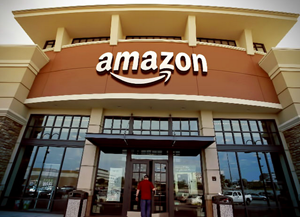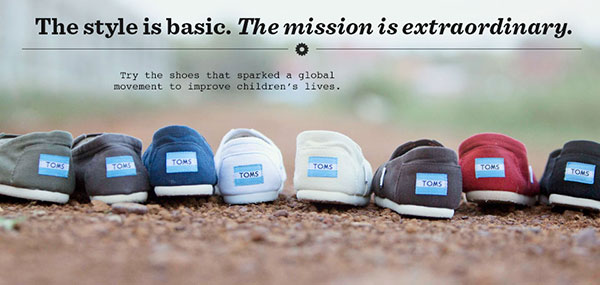How High-Revenue Ecommerce Stores Compete with Amazon
As e-commerce substantially evolves, online marketplaces like Amazon come on stronger than ever with  their value proposition including fast free shipping, free returns, an endless aisle of products, and low prices. As a result, many online retailers feel that they would be defeated if they do not sell through Amazon despite the major downsides to relying too heavily on the e-commerce giant. However, the new study conducted by Andrew Youderian, the Founder of eCommerceFuel.com, may change this perception.
their value proposition including fast free shipping, free returns, an endless aisle of products, and low prices. As a result, many online retailers feel that they would be defeated if they do not sell through Amazon despite the major downsides to relying too heavily on the e-commerce giant. However, the new study conducted by Andrew Youderian, the Founder of eCommerceFuel.com, may change this perception.
Youderian, as an e-commerce entrepreneur surveyed more than 300 high-revenue e-commerce store owners to get a deep grasp primarily on the industry trends and the level of Amazon dependency. He surprisingly found out that the majority (51 percent) were not selling on Amazon and more than two-thirds of store owners are generating only 6.2% of their sales from Amazon. To me, these numbers are telling something different than we all know. After all, the behemoth of e-commerce is not the only way of keeping up your momentum as an online retailer. In the light of these encouraging findings, let’s discuss the tactics of competing with Amazon without losing revenue.
Online Presence Matters
An e-commerce website is an equivalent of a traditional front store in the digital era. They are as important as your brick-and-mortar store. The design of Amazon’s website is not exactly great. Therein lies the opportunity! If you provide an online store powered by all the aspects of both beauty and practicality, you will give consumers a reason to come back to your site. To that point, your online store should include from fast page load, ease of check-out, mobile site responsiveness and the easy navigation to thorough product details, use cases and how-to videos. According to Gartner, 64% of people say customer experience is more important than price in their choice of a brand, and by 2020, customer experience will overtake price and product as the key brand differentiator.
Show Consumers What They Want
Are you familiar with recommendation widgets statements like “Frequently bought together” or “People who bought this also bought”? I thought so! 35 percent of what consumers purchase on Amazon and 75 percent of what they watch on Netflix come from product recommendations based on such algorithms. Considering one of the primary factors behind the story of Amazon becoming the multi-billion dollar behemoth is its integrated recommendations, it doesn’t take a great deal of IQ to have that feature on your online store if would like to have a leg up on the competition against popular commerce sites like Amazon.
bought this also bought”? I thought so! 35 percent of what consumers purchase on Amazon and 75 percent of what they watch on Netflix come from product recommendations based on such algorithms. Considering one of the primary factors behind the story of Amazon becoming the multi-billion dollar behemoth is its integrated recommendations, it doesn’t take a great deal of IQ to have that feature on your online store if would like to have a leg up on the competition against popular commerce sites like Amazon.
The recent Episerver study, “Reimagining Commerce,” suggests that 43 percent of respondents expect brands to know about their purchase histories, followed by personal interests with 25 percent, demographics with 20 percent, and billing information with 17 percent. After all, consumers expect you to know about them.
Providing relevant product recommendations is also very important to establish a deep relationship with consumers as they give them the sense of being understood and properly served. In one of my most recent articles, entitled The ROI of Recommendation Engines, you can find more information on the most common three approaches and how to maximize the outcomes.
Establish a Thought Leadership
For Amazon, having an endless aisle of merchandise is a blessing and a curse at the same time. That’s where thought leadership comes into play. The combination of quality information and industry expertise can go a long way. Therefore, when you spend a great deal of time providing valuable and tailored information and conveying that through a great content strategy, you will be selling a value that consumers can’t get from Amazon. As a result, you will not have to take the risk of having too much of your revenue coming from a platform you don’t control, rely on razor-thin pricing, and cannibalize your own direct sales.
Shipping Policy
I do not know about you, but when I think of Amazon’s strengths, almost the first thing to come to mind is its well-received shipping policy. From same-day shipping to two-day shipping for free, they have various options in that department. However, there is also a trench of same-day-delivery start-ups, including WunWun, Postmates, and Instacart, they are offering faster shipping by sending couriers to pick up items at local stores, rather than sending them from centralized warehouses.
Create a Sense of Community
 As Leah Kinthaert pointed out in the 50th episode of the CMS-Connected Show: “Only 1% of millennials trust the products in ads”. Why? They simply don't see them as authentic. On the other hand, 63% of customers are more likely to make a purchase from a site which has user reviews. Therefore, it is important to provide them an environment where they banish their doubts about a product through FQA or product reviews long before they create contact with sales or a support department. It is not as easy as it sounds, though. The key to achieving a sense of community is developing a very distinct brand identity. From social media activities to content marketing strategy, all should be a blood cell of that persona and grow it over time. “We love to see user-generated content as it is inspiring for the community. It’s not just on that one day; our customers create social content all the time showing them gifting Toms or wearing them on their wedding day, and they tag us because they want us to be part of it,” said Toms UK marketing manager Sheela Thandasseri.
As Leah Kinthaert pointed out in the 50th episode of the CMS-Connected Show: “Only 1% of millennials trust the products in ads”. Why? They simply don't see them as authentic. On the other hand, 63% of customers are more likely to make a purchase from a site which has user reviews. Therefore, it is important to provide them an environment where they banish their doubts about a product through FQA or product reviews long before they create contact with sales or a support department. It is not as easy as it sounds, though. The key to achieving a sense of community is developing a very distinct brand identity. From social media activities to content marketing strategy, all should be a blood cell of that persona and grow it over time. “We love to see user-generated content as it is inspiring for the community. It’s not just on that one day; our customers create social content all the time showing them gifting Toms or wearing them on their wedding day, and they tag us because they want us to be part of it,” said Toms UK marketing manager Sheela Thandasseri.
Women now comprise 63% of all online buyers, according to Tiffany Bass Bukow, founder of MsMoney.com. “When shopping online, women look for a relationship in addition to convenience. Women enjoy websites where they can browse, chat, ask questions and feel a sense of community,” says Mark Levit, the founder and managing partner of Partners & Levit, Inc. If you need some ideas to make your audiences feel inspired and motivated to contribute to your community, this article entitled 4 B2B Content Marketing Trends You Need To Know for 2017 may help you get the creative juices flowing.
Capitalize on Mobile Shopping
According to a BI Intelligence report, between 2016 and 2020, U.S. mobile commerce (mCommerce) sales are projected to grow nearly 260%, from $79 billion to $284 billion. This statistic presents enormous opportunities for retailers to harness the unique power of mobile. Additionally, even though B2B generates less revenue than B2C, the pace of adoption is extremely fast as 50% of B2B buyers are tech-savvy, young mobile users, who are decision makers, influencers or stakeholders. Therefore, B2B mobile commerce will see more and more of an increase in the coming years.
projected to grow nearly 260%, from $79 billion to $284 billion. This statistic presents enormous opportunities for retailers to harness the unique power of mobile. Additionally, even though B2B generates less revenue than B2C, the pace of adoption is extremely fast as 50% of B2B buyers are tech-savvy, young mobile users, who are decision makers, influencers or stakeholders. Therefore, B2B mobile commerce will see more and more of an increase in the coming years.
Fortunately, mobile shopping is not exactly one of Amazon’s strengths. Therefore adopting new mobile technologies like mobile image recognition, personalized push notifications, augmented reality applications, and much more can help you garner tech-savvy consumers’ traction and deliver them different experiences.
Another great idea came from Benedict Evans, a partner at Silicon Valley venture-capital firm Andreessen Horowitz as he said: “On the desktop, the browser was actually fundamentally a neutral, unmediated, transparent platform. A smartphone is not. Mobile platforms can create entirely new ways of discovering products.” To that point, incorporating with a seasoned mobile app developer may be a smart move.
We have put together the key emerging mobile commerce technologies you should be aware of and adopt for 2017.
Create a Good Cause
People are so caught up in their own routines. Even though everybody somehow wants to make a difference in the world, they simply can’t take actions due to the lack of time or motivation. If you sell your product with a good cause, you will not only help consumers make a difference in the world but also develop a socially conscious brand identity along with a strong sympathy from your audience. As a perfect example, Footwear brand Toms’ has built a powerful business based on the premise of donating a pair of shoes for each pair sold. The campaign played out so perfectly worldwide. As a result of the 2016 event, Toms donated 27,435 shoes to children across the world. The brands engaged more than 3.5 million people on all social media channels, with the #WithoutShoes hashtag produced 17 million impressions across Toms’ own social platforms and 62 million impressions in total. It is quite clear that you can connect with consumers over a deeper purpose without offering insanely fast shipping or incredibly low prices.

Just because Amazon is arguably the most powerful platform in the ecommerce space doesn’t mean beholden to Amazon is the only way of winning this game. Conversely, it poses its own unique risks alongside its obvious advantages, including having too much of your revenue coming from a platform you don’t control, relying on razor-thin pricing, and cannibalizing your own direct sales. There is not a one-size-fits-all approach as every product line has its own unique audience and message. If you present a high-end brand, Amazon won’t be the platform that you could highlight its premium aspects. If you sell a plastic baby product, on the other hand, selling through Amazon is extremely tempting as it eliminates all the marketing efforts.
Now that you know the tactics that can give you an edge, why not to check out one of our most popular series entitled CMSC Reviews Six Top Enterprise eCommerce Platforms where we assessed the key features, pros and cons, and pricing of Demandware, BigCommerce, Shopify, commercetools, Hybris, and Magento.

Venus Tamturk
Venus is the Media Reporter for CMS-Connected, with one of her tasks to write thorough articles by creating the most up-to-date and engaging content using B2B digital marketing. She enjoys increasing brand equity and conversion through the strategic use of social media channels and integrated media marketing plans.